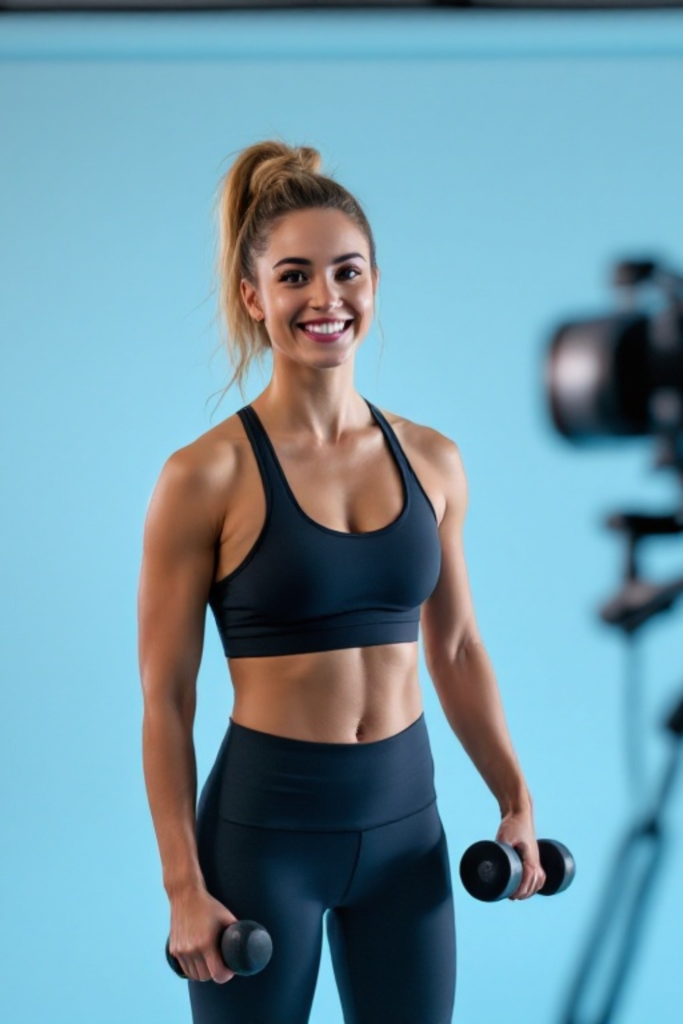
In today’s digital age, fitness influencers are everywhere. From Instagram to TikTok, they share workout routines, diet tips, and quick fixes for achieving the “perfect” body. While some influencers provide valuable insights, others spread misinformation that can mislead their audience. It’s essential to separate fact from fiction when consuming fitness advice, especially when it impacts your health and wellness journey.
This blog post dives into some of the most common claims made by fitness influencers, debunks the myths, and offers practical, evidence-based alternatives to help you make informed decisions.
Claim 1: Spot Reduction for Fat Loss
One of the most popular claims is that you can target fat loss in specific areas of your body through exercises like crunches for belly fat or leg lifts for thigh fat. This idea, known as spot reduction, is a myth.
The Truth: Fat loss doesn’t work that way. When you lose fat, it happens throughout your body, not in one specific area. Research shows that a combination of a calorie deficit, strength training, and cardiovascular exercise is the most effective way to reduce overall body fat.
What You Can Do Instead:
- Focus on full-body workouts that combine strength and cardio.
- Maintain a balanced diet rich in whole foods, lean protein, and healthy fats.
- Be patient—sustainable fat loss takes time and consistency.
Claim 2: Quick Transformations Are Achievable
Scattered across social media are “before-and-after” photos showing dramatic transformations in just a few weeks. These posts often promote detox teas, extreme diets, or high-intensity workout plans.
The Truth: While these transformations may look impressive, they are rarely sustainable or healthy. Many quick results come from extreme calorie restriction or dehydration, which can harm your body in the long run.
What You Can Do Instead:
- Set realistic goals for your fitness journey.
- Track progress through non-scale victories like improved energy, strength, or endurance.
- Avoid fad diets and focus on long-term lifestyle changes.
Claim 3: No Pain, No Gain
The phrase “no pain, no gain” has been a mantra for many fitness enthusiasts. It implies that if your workouts aren’t painful, you’re not working hard enough.
The Truth: While challenging your body is essential for growth, pain is not an indicator of a good workout. Pain can be a sign of injury or overtraining, which can derail your fitness journey.
What You Can Do Instead:
- Listen to your body and prioritize proper form over intensity.
- Include rest days in your routine to allow your muscles to recover and grow.
- Focus on gradual progression rather than pushing yourself to the point of pain.
Claim 4: Supplements Are Necessary for Results
Many influencers promote supplements like protein powders, pre-workouts, and fat burners as essential for achieving fitness goals. While supplements can be helpful, they are not a magic solution.
The Truth: Supplements should complement a well-rounded diet, not replace it. Whole foods provide the nutrients your body needs for optimal performance and recovery.
What You Can Do Instead:
- Prioritize nutrient-dense foods like fruits, vegetables, lean proteins, and whole grains.
- Consult with a healthcare professional before adding supplements to your routine.
- Remember that consistency in diet and exercise is more important than any supplement.
Practical Framework for Evaluating Fitness Advice
With so much information available, it can be challenging to distinguish between credible advice and misleading claims. Here’s a simple checklist to help you evaluate fitness advice:
- Consider the Source: Is the influencer certified or experienced in fitness and nutrition?
- Look for Evidence: Does the claim have scientific backing or reputable references?
- Avoid Extremes: Be cautious of advice that sounds too good to be true or promotes extreme measures.
- Focus on Sustainability: Prioritize advice that encourages long-term, healthy habits.
Conclusion: Empower Yourself with Knowledge
Fitness influencers can be a source of inspiration, but it’s crucial to approach their advice with a critical eye. By understanding the science behind popular claims and focusing on sustainable practices, you can make informed decisions that align with your fitness goals.
Remember, your journey is unique. Trust the process, stay consistent, and prioritize your health above all else.
Please check our workout area here.

